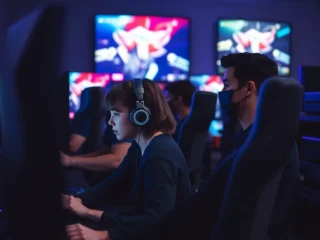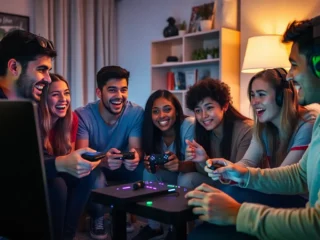
If you have listened to Phil Spencer, head of Microsoft Gaming and de facto Xbox boss, over the last few years, you would be forgiven for thinking that the end of the console era is nigh. Spencer constantly talks about the “gaming anywhere” approach, meaning that access to subscription services will be much more important than physical hardware. His words, coupled with other experts in the industry, has helped build a narrative that the era of console gaming will end sooner rather than later.
The arguments are persuasive, of course. Gamers, these days, are used to an abundance of choice online. It doesn’t matter if your goal is to play AAA titles or spin on online slots; the availability is instant. It calls into question why you need a console to access the best gaming experiences. Yes, there are console exclusives, but they are limited in number. Moreover, the concept of console exclusives does not, in and of itself, make a case for the need for a console. It’s a decision made by Sony, Xbox, etc.
Nonetheless, you may have seen news stories about the scarcity of Nintendo Switch 2 consoles since its launch in early June. The hardware has become the hottest ticket in town, with reports of 3.5 million units shipped in just four days. It is the fastest-selling Nintendo console in history, making a mockery of anyone who has said the console is dead.
Nintendo plays by its own rules
Of course, this does not tell us everything about the direction of travel, and there are unique circumstances that relate to Nintendo devices compared to other consoles from Sony and Xbox.
Yet, the fact that the Nintendo Switch 2 is flying off the shelves (when people can actually get them) is a pretty remarkable success, and it does offer a fairly compelling counter-narrative to the argument to those calling for the death of the console.
Certainly, Nintendo has always played by its own rules. The company often lags behind on raw processing power or multimedia integration, yet it consistently delivers on what matters most to its fans: fun, accessible, and often exclusive gameplay experiences. With the Switch 2, Nintendo has doubled down on hybrid portability, family-friendly appeal, and a launch lineup bolstered by long-awaited titles like Zelda: Echoes of the Depths and Mario Kart X.
Hardware can still be an attractive proposition
Crucially, Nintendo isn’t pushing a subscription ecosystem to the same degree as its rivals. While Switch Online exists, it’s not the focal point of the platform. Players buy the console to play games they can’t get anywhere else, not because it’s a gateway to a Netflix-style library. That kind of brand loyalty is difficult to replicate and may explain why Nintendo consoles might not suffer the same (expected) demise of other hardware systems.
It would be foolish and a bit short-sighted to suggest that digital and cloud-based gaming aren’t the future. But the Switch 2 proves that the death of consoles isn’t inevitable; it’s conditional. If manufacturers give players a reason to care about hardware, they’ll come back again to purchase again and again. Yet, you have to offer experiences that aren’t readily available elsewhere. By and large, Nintendo does that, but it still feels like the other gaming giants are heading in another direction.




